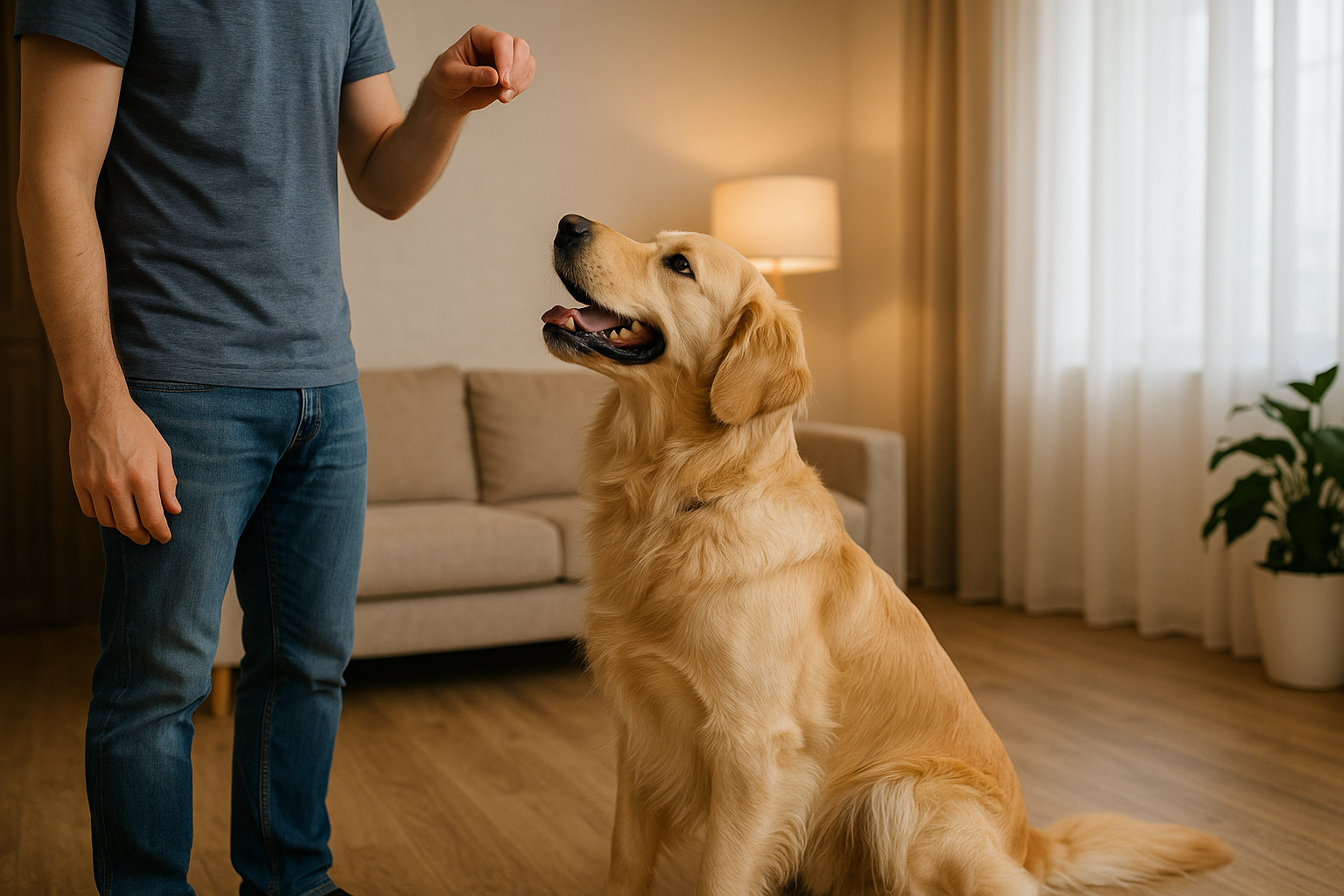Golden Retrievers are known for their intelligence, loyalty, and eagerness to please—making them one of the easiest dog breeds to train. But even though they’re naturally obedient, proper training still requires patience, consistency, and a few smart strategies. The good news? You don’t necessarily need a professional dog trainer to help your Golden become a well-behaved companion. With the right approach, you can do it all on your own.
Understand Your Golden’s Temperament
Before diving into training sessions, it’s essential to understand the unique personality of Golden Retrievers. They are:
- Highly social and affectionate
- Extremely eager to please their owners
- Energetic and playful
- Intelligent and quick learners
Knowing this will help you tailor your training sessions to what works best for your dog. For example, they respond much better to positive reinforcement than to punishment or scolding.
Start With the Basics
If your Golden Retriever is still a puppy, start as early as possible. But even adult dogs can learn new tricks! Begin with the most basic commands:
- Sit
- Stay
- Come
- Down
- Leave it
These are foundational commands that set the stage for more advanced behaviors. Use short, 5-10 minute sessions multiple times a day, and always end on a positive note.
Use Positive Reinforcement
Golden Retrievers thrive on positive reinforcement. This means rewarding the behavior you want to see more of. Effective rewards include:
- Treats
- Toys
- Praise
- Belly rubs
Every time your dog follows a command correctly, immediately reward them so they associate the behavior with something good. Be consistent—this is what creates strong habits.
Be Consistent With Commands
One of the most common mistakes in DIY training is using different words or tones for the same command. For example, if one day you say “Down,” and another day say “Lay down,” your dog might get confused. Pick one word for each action and stick with it.
Also, make sure everyone in your household uses the same commands and rules. Inconsistency from humans often leads to confusion in dogs.
Avoid Overtraining
While enthusiasm is great, overtraining can lead to frustration for both you and your Golden Retriever. If your dog seems distracted or uninterested, take a break. Short sessions are more effective than long ones. Try these timing tips:
- Puppies: 5 minutes per session, 3–5 times a day
- Adult dogs: 10–15 minutes per session, 2–3 times a day
End each session with playtime or something your dog enjoys. This helps create a positive association with training time.
Use Clicker Training (Optional but Helpful)
Clicker training is a popular method that can speed up the learning process. It works by using a small handheld clicker that makes a sound to mark the exact moment your dog performs a desired behavior. Immediately after the click, you give a treat.
The “click” becomes a signal to your dog that they did something right. Over time, this can significantly improve your dog’s response time to commands.
Address Problem Behaviors Calmly
It’s completely normal for your Golden to make mistakes along the way. Jumping, barking excessively, chewing, and pulling on the leash are common behavioral challenges. The key is not to react with anger or punishment, but to calmly redirect their behavior. For example:
- Jumping: Ask your dog to sit instead. Only reward when they’re calm.
- Chewing: Provide acceptable chew toys and remove inappropriate ones.
- Leash pulling: Stop walking when they pull. Only continue when the leash is loose.
Correct behavior should always be followed by a reward, while undesired behavior should be ignored or redirected—never punished harshly.
Make Socialization Part of Training
A well-socialized Golden Retriever is a confident and well-behaved one. Socialization is just as important as command training. Gradually expose your dog to:
- Different people
- Other dogs
- Various environments
- Noises and smells
Start in controlled environments and reward your dog for calm and friendly behavior. This will reduce fear, anxiety, and aggression later in life.
Practice in Different Environments
Training your Golden in different settings helps them learn to obey commands no matter where they are. Practice in:
- Your backyard
- Parks
- Streets (on a leash)
- Pet-friendly stores
Start in low-distraction environments and slowly increase the difficulty. Your dog should eventually be able to respond to commands even in more stimulating places.
Be Patient and Celebrate Small Wins
No dog becomes perfectly trained overnight. Some days will be harder than others, and that’s okay. What matters is your consistency, love, and patience.
Celebrate small wins! If your Golden finally stops jumping on guests or comes when called from a distance, that’s a huge achievement—praise them like crazy.
When to Consider Help
While most Golden Retrievers can be trained without a professional, there are exceptions. If your dog shows signs of aggression, anxiety, or extreme behavioral issues, don’t hesitate to consult a vet or a certified trainer. Your safety and your dog’s well-being always come first.
A Strong Bond Leads to a Well-Trained Dog
Training your Golden Retriever is more than just teaching commands—it’s about building trust, communication, and mutual respect. With the right mindset and consistent practice, you’ll not only have a well-behaved dog but also a lifelong best friend. Whether you’re a first-time owner or an experienced dog parent, training your Golden yourself can be one of the most rewarding parts of the journey.

